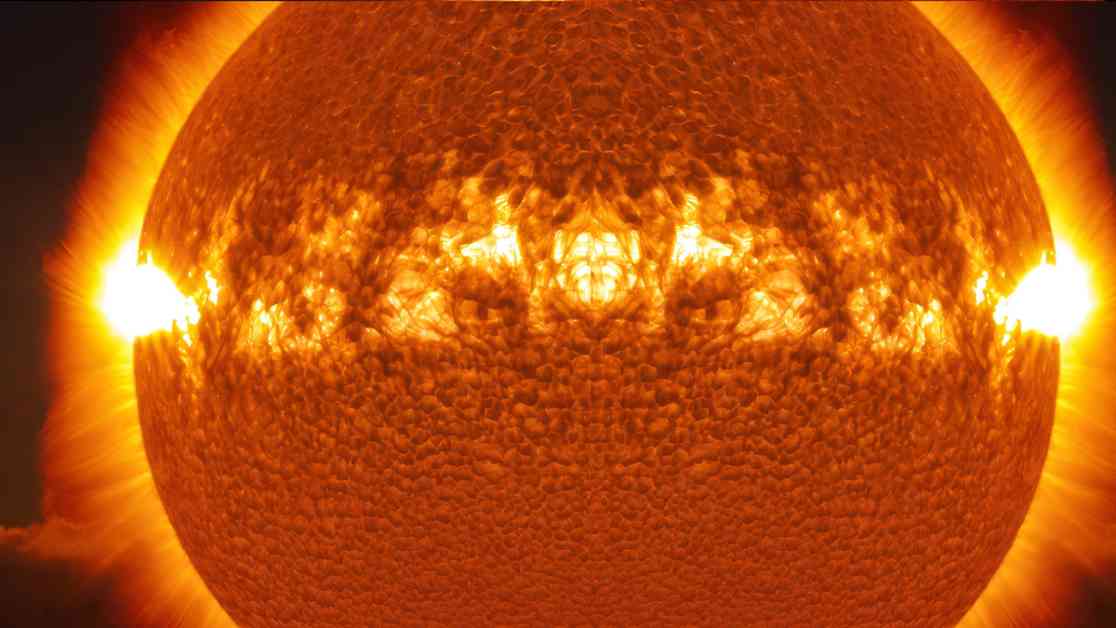Astronomers have made a groundbreaking discovery that challenges our understanding of stellar evolution theories. They have identified a massive star, named J0524-0336, which is 30 times larger than our own sun and located approximately 30,000 light-years away from Earth. What sets this star apart is its unexpectedly high concentration of the element lithium, compared to other stars of similar ages.
The discovery of J0524-0336 has sparked a reevaluation of existing models of how stars evolve and produce heavier elements through nuclear fusion. Typically, light elements like lithium are believed to be lost during this process in favor of heavier elements such as carbon and oxygen. However, the presence of a significant amount of lithium in this massive star challenges this conventional wisdom.
Upon closer examination, astronomers found that not only is J0524-0336 rich in lithium, but it also lacks heavy elements that are commonly found in stars of similar ages. This unique chemical composition has left researchers puzzled and intrigued, prompting them to explore new possibilities in stellar evolution.
### Unveiling the Mystery of J0524-0336
To uncover the secrets of J0524-0336’s chemical composition, researchers employed a technique called spectroscopy. By analyzing the star’s light output, or spectra, scientists were able to determine the ratio of elements present in the star. What they found was astonishing – J0524-0336 contains an astounding 100,000 times more lithium than the sun does at its current age.
Team leader and University of Florida researcher Rana Ezzeddine expressed the significance of this discovery, stating, “This amount challenges the prevailing models of how stars evolve and may suggest a previously unknown mechanism for lithium production or retention in stars.” The abundance of lithium in J0524-0336 raises questions about our current understanding of stellar processes and calls for further investigation.
### The Enigma of J0524-0336’s Composition
The unexpected chemical composition of J0524-0336 has left astronomers speculating about the possible explanations for this anomaly. One theory posits that the star may be in a stage of stellar evolution that has never been observed before, leading to its unique composition. Another possibility is that J0524-0336 may have absorbed lithium-rich material from a nearby planet or star, resulting in its lithium-enriched state.
Ezzeddine proposed that both mechanisms could have played a role in shaping J0524-0336’s composition, given the unprecedented levels of lithium found in the star. The team is dedicated to investigating these hypotheses further to unravel the mystery behind this unusual discovery.
Continued monitoring of J0524-0336 will be crucial in determining the underlying cause of its chemical composition. By observing any changes in the star’s composition over time, researchers hope to gain insight into the mechanisms at play and shed light on this enigmatic stellar phenomenon.
### Conclusion
The discovery of J0524-0336 and its unexpected chemical composition have opened new avenues for research in stellar evolution and element production in stars. By challenging existing models and theories, this massive star has provided astronomers with a unique opportunity to expand our understanding of the universe’s most fundamental processes.
As scientists continue to unravel the mysteries of J0524-0336, they are poised to make significant advancements in our knowledge of stellar evolution and the formation of elements in the cosmos. This groundbreaking discovery serves as a testament to the endless wonders of the universe and the limitless potential for discovery that awaits us in the vast expanse of space.













